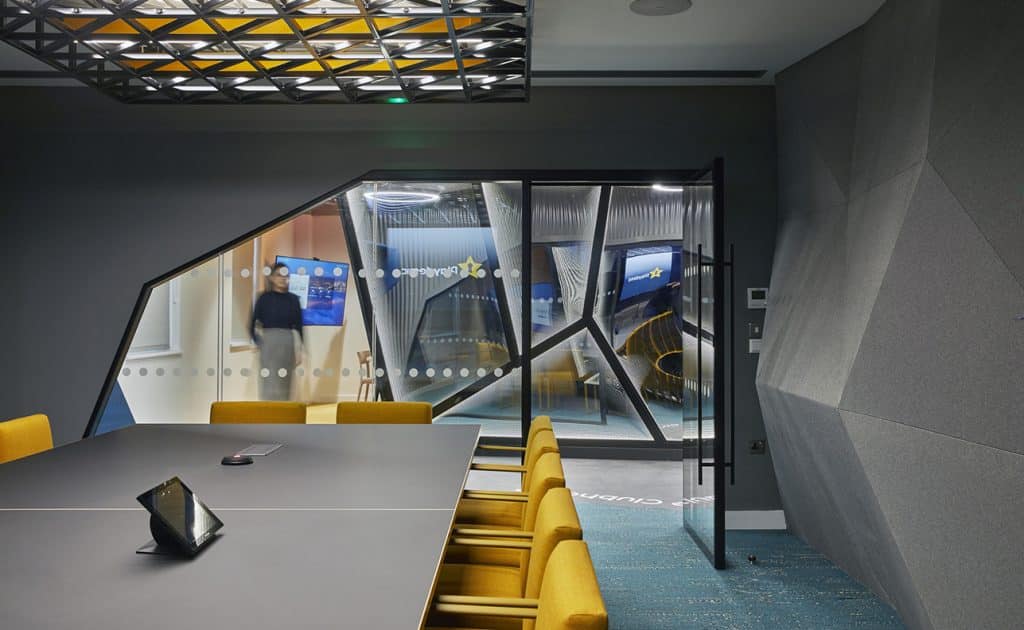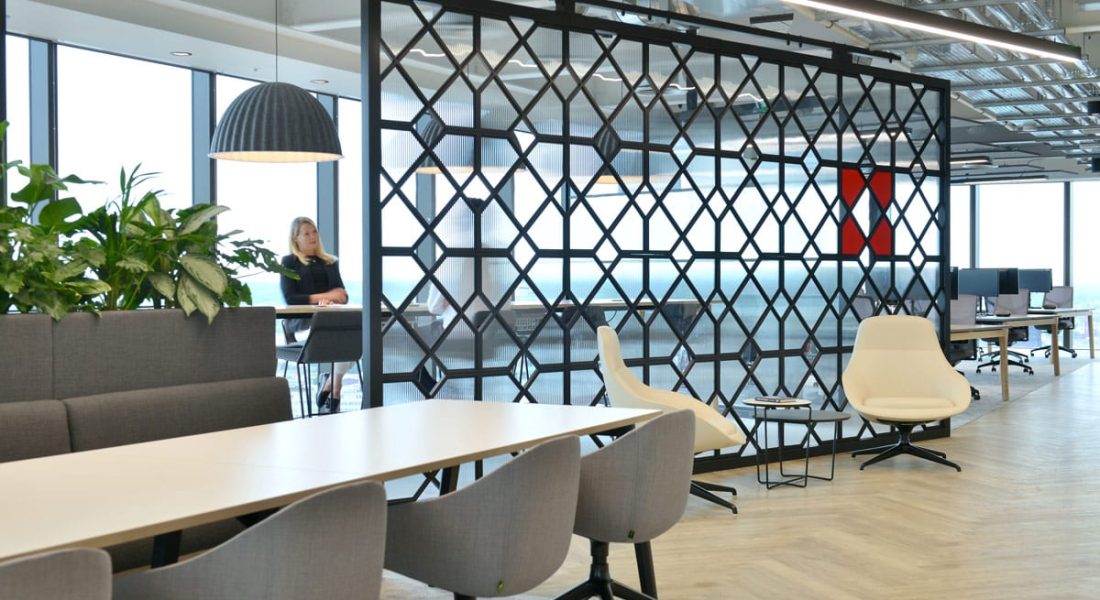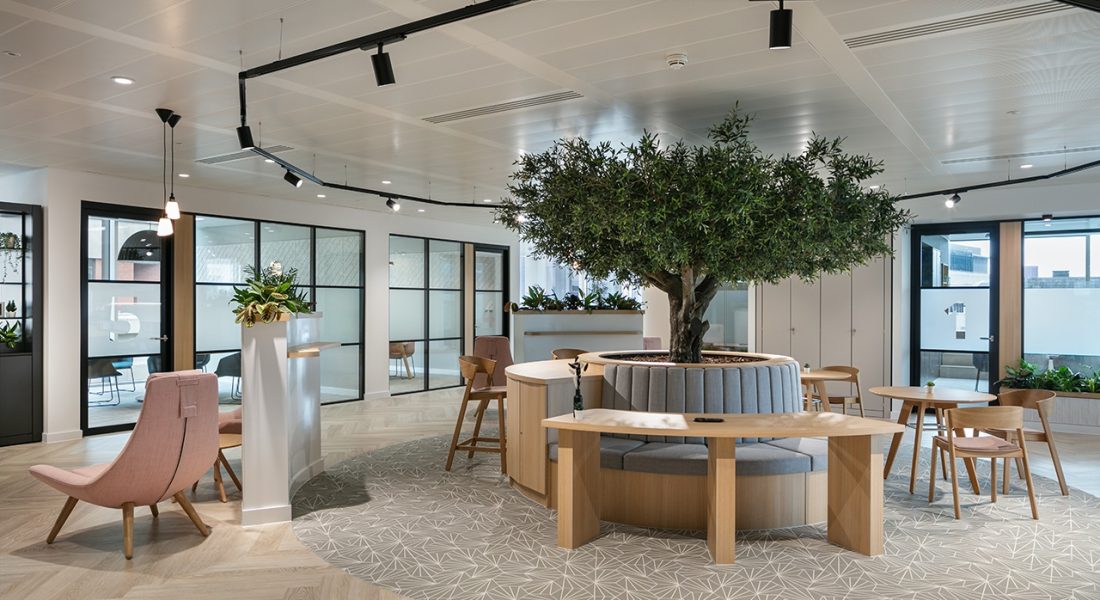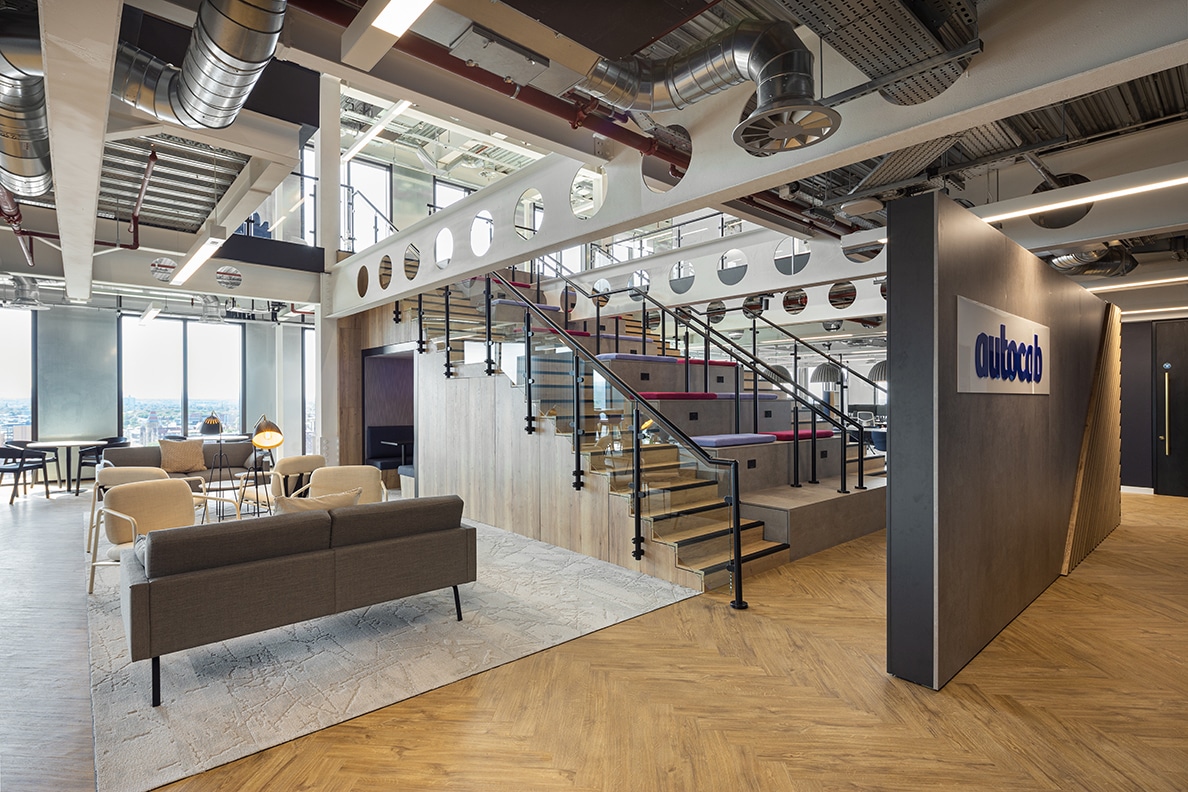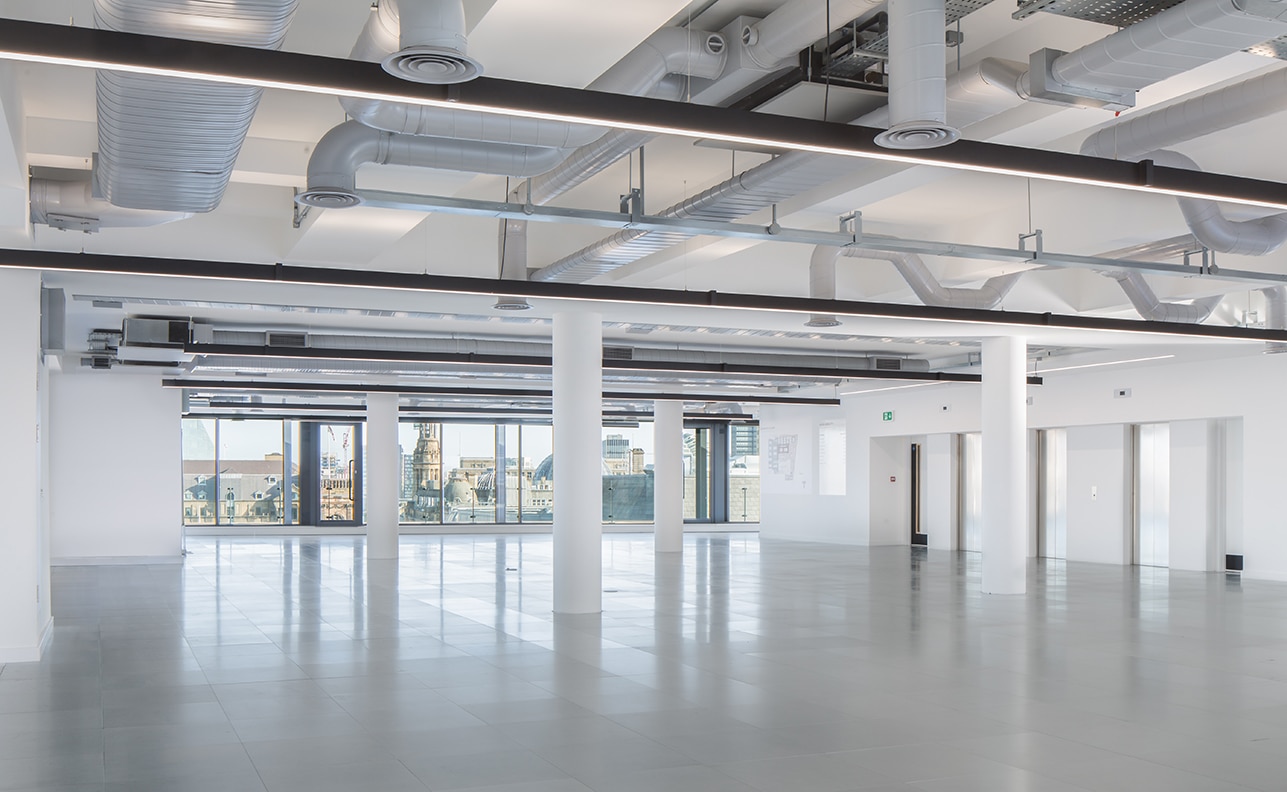Understanding the Hybrid Landscape
Flexible Workpoints: A New Way to Work
The concept of the “workpoint” replaces the traditional fixed desk with a variety of spaces that support different activities. These can include:
- Hot-desks and touchdown areas for short-term use.
- Quiet zones for focused, individual work.
- Project spaces for group collaboration.
- Lounge settings that promote informal interaction.
By creating a diverse range of workpoints, businesses allow employees to choose where and how they work best. This variety encourages movement, reduces monotony, and enhances engagement.
Space Zoning and Smart Planning
Zoning is essential for balancing energy and focus across the office. A well-designed hybrid workspace uses distinct zones to separate activities while maintaining flow. For example, open collaborative areas should sit close to breakout spaces, while private meeting rooms should be positioned away from high-traffic routes.
Good zoning also considers acoustics, lighting, and proximity to shared resources. When done effectively, it creates intuitive navigation and ensures the workspace feels cohesive, even when employees come and go at different times.
Technology as an Enabler
Technology is the backbone of hybrid success. Video conferencing tools, seamless Wi-Fi, and digital booking systems help connect distributed teams and ensure workpoints are used efficiently.
Smart workplace apps can track desk availability, manage meeting room bookings, and monitor occupancy levels. This data-driven insight allows companies to make informed decisions about future layouts and space utilisation. By integrating these systems during the fit-out stage, businesses can future-proof their workspace and improve daily operations.
Furniture and Fit-Out Choices
Flexible workpoints demand adaptable furniture solutions. Moveable tables, height-adjustable desks, and modular seating allow quick reconfiguration for different tasks. Soft seating and acoustic booths create inviting environments for focused or collaborative work, while integrated power and USB ports ensure functionality isn’t sacrificed for comfort.
At ADT Workplace, we design and deliver fit-outs that merge form and function. Every element — from acoustic panelling to biophilic features — is chosen to enhance wellbeing and flexibility. The result is a space that looks beautiful, performs efficiently, and evolves with your business.
Designing for Connection and Culture
While hybrid work offers freedom, it can also create distance between teams. Thoughtful office design bridges that gap. Shared spaces such as cafés, collaboration hubs, and informal meeting points help nurture company culture.
A workplace that supports social interaction reinforces a sense of belonging and strengthens team identity. When people feel connected to their environment and colleagues, they are more engaged, creative, and productive.
Sustainability and Longevity
Designing for flexibility also means designing for longevity. A future-ready workspace should adapt to new working patterns without requiring complete refurbishment. Choosing sustainable materials, reconfigurable layouts, and energy-efficient systems ensures that the office remains relevant and environmentally responsible.
At ADT Workplace, we prioritise sustainable design practices that support both business goals and the planet.
Conclusion
The hybrid era has redefined what a workspace should be — flexible, purposeful, and people-centred. Through strategic design, smart technology, and adaptable fit-out solutions, businesses can create environments that empower teams to work effectively, wherever they are.
To discover how ADT Workplace can help you redesign your office for the hybrid future, get in touch with our team today.


